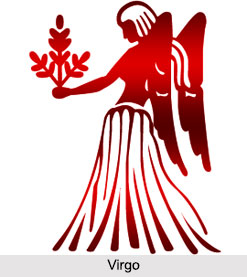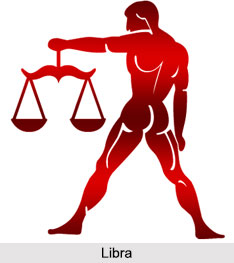 Vedanga Jyotisa in explaining the scope of astronomy states that it is the Vedas which reveal the purpose of performing the sacrificial rites highlight the significance of time which holds the importance of the sacrifice. As such this brings the need to find the one who is versed with the science of astronomy, the science of reckoning time as well as knows the sacrifice at the same time. The Brahamana literature mentions some particular terms which reveal the existence of the Nakshatras, stars, sun, moon etc which at the same time talks about the persons who were called Nakshatradrasa meaning the `star grazers` or `a grazer at the lunar mansion.` This has also been used to refer to the astrologers.
Vedanga Jyotisa in explaining the scope of astronomy states that it is the Vedas which reveal the purpose of performing the sacrificial rites highlight the significance of time which holds the importance of the sacrifice. As such this brings the need to find the one who is versed with the science of astronomy, the science of reckoning time as well as knows the sacrifice at the same time. The Brahamana literature mentions some particular terms which reveal the existence of the Nakshatras, stars, sun, moon etc which at the same time talks about the persons who were called Nakshatradrasa meaning the `star grazers` or `a grazer at the lunar mansion.` This has also been used to refer to the astrologers.
Another term which is often found in the Vedas is Ganaka which literary means a calculator or a mathematician. The mention of such people implies the study of astronomy both practically through observation of stars and theoretical calculations through calculations. The study of astronomy which has been cultivated in the ancient India during the Vedic period is based on the selection of few fixed stars which are important for the development of a system of Lunar mansion; the fixation of a Savana year of 360 days based on the length of the day; elaboration of quinquennial cycle with intraocular months which takes us back to the period of Rig Veda which contain the idea of four mundane ages and a number of findings which show their interest in astronomy. Overall Vedanga Jyotisa had been one of the most important contributions of the Brahamanical Age which paved the way for astronomy in India.
Origin of Vedanga Jyotisa
Vedanga Jyotisa can be traced back to 1200BC, a time when solstices coincided with the middle of Aslesa and the beginning of Dhanistha. These are the post Vedic age which includes the discovery in astronomy. This phenomenon has been described in a number of Sutras of Vedic Age and the Jyotisa which remained unquestioned till from 700 or 600BC till 200 or 400 BC when Filliozat placed his theory during this period. The work of Vedanga Jyotisa is further attributed to Lagadha who is assumed to have recasted the original work of Vedanga Jyotisa according to the present day observations which was later on upgraded from time to time.
Theories of Vedanga Jyotisa
Vedanga Jyotisa begins with a description of five year luni-solar cycle which is known as Yuga. At the beginning of the cycle both the Sun and moon lie at the starting point of the Nakshatra Dhanishtha from where the sun goes round the circle asterism for 5 times and moon for 67 times. This divides the calculation of the calendar as a year consisting of 366 civil days and five year cycle containing 1830 savana days which is further divided into 67 sidereal months and 62 synodic months where each synodic month include 30 lunar days overall covering a period of 1860 days. In case of sidereal months it includes 27 to 31 days which is equal to 29 to 52 days of Synodic month. To summarize this can be viewed in a table form which demarcates 5 sun`s revolution; 67 moon`s sidereal revolution or month; 62 synodic revolution or month; 1830 savgana or civil days; 1835 sidereal days; 1800 solar days and 1860 lunar days.
Vedanga Jyotisa then divides the days into 30 muhurtas which includes 1 muhurta into two nagdiks, 1 nagdik into 101/2 kalas, 1 kalainto 124 kasthas and I kashthas into 5 astharas. This makes a savana day equal 603 tolds and a lunar day (tithi) 59317/62 kalas. The duration of naksatra is 610 kalas. The above measurements have been helpful in calculating the places of the asterism where the new and the full moon take place during the whole of quinquennial cycle; which shall explain the location of the nakshatras in the space which is important to study the science of astronomy and location of stars to predict the future.
Vedanga Jyotisa also for the first time helps to measure the length of the day where it records 12 muhurtas for the days in winter and 18 muhurtas for a day in the summer. This helps the Jyotisa to record two seasons of summer and winter on the basis of the length of the day and night.
Thus, Vedanga Jyotisa had been one the biggest innovations in field of Hindu Astronomy which opened the way for deeper studies by such eminent scholars like Aryabhat who calculated the universe on the basis of this Puranic text and transform the dark universe into bright science of calculations.












